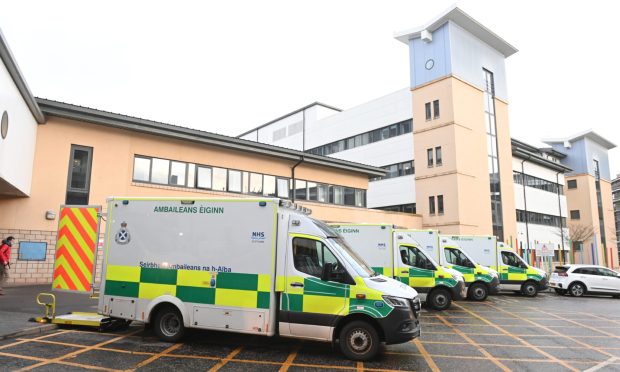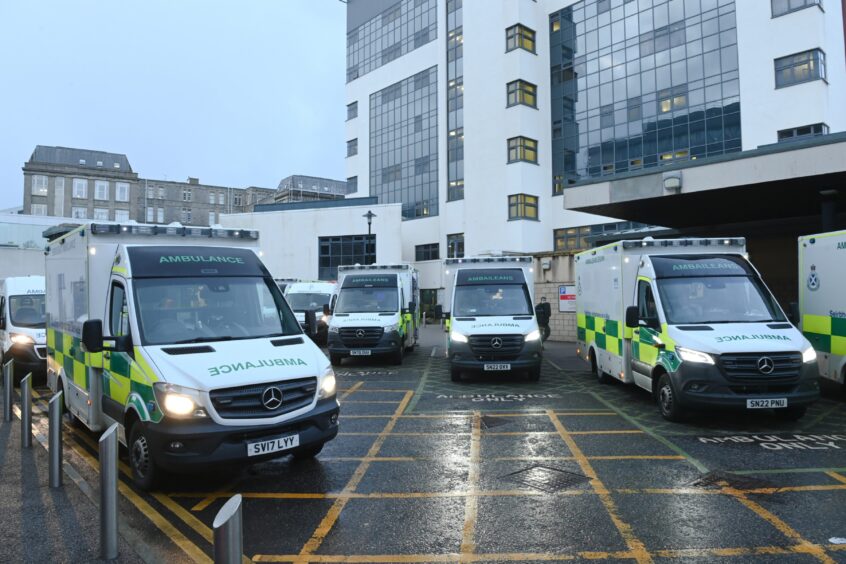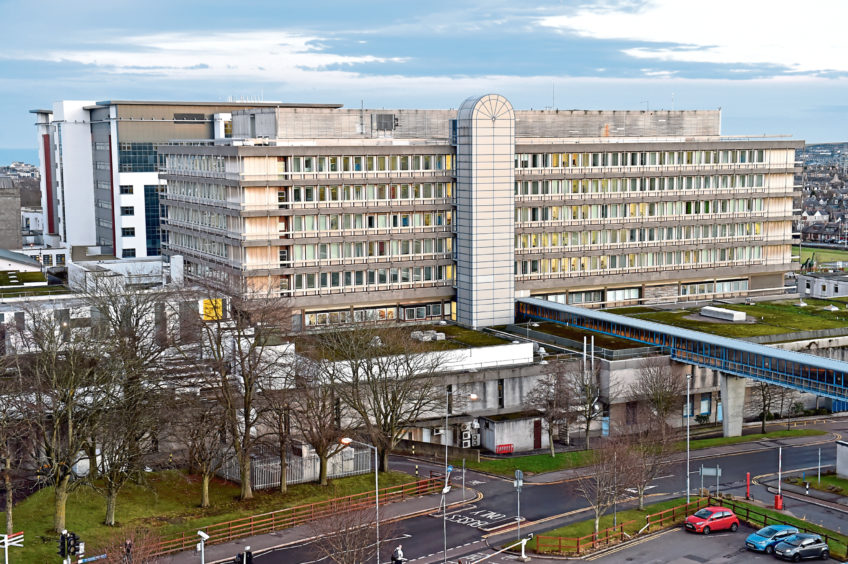An “unannounced” inspection carried out at Aberdeen Royal Infirmary has uncovered more details of an ambulance waiting time crisis affecting the city’s flagship hospital.
Healthcare Improvement Scotland (HIS) visited the Foresterhill site over three days in October last year, where inspectors noted staff were “experiencing a significant range of pressures” including increased hospital admissions meaning many patients were being cared for in corridors.
The visit came just a few weeks before it was revealed that ARI had recorded Scotland’s longest ambulance turnaround time of 2023.
The P&J also revealed in December how as many as 17 ambulances were seen queuing up outside A&E one evening.
Numerous issues uncovered during ARI inspection
HIS inspectors examined almost 20 wards including the emergency department, intensive care unit and the acute medical initial assessment area.
They uncovered numerous issues including –
- evidence of an incident where a patient had become critically unwell whilst waiting outside the hospital in an ambulance due to lack of available space within the emergency department
- an occasion where a patient waited more than 18 hours in the ambulance cohort area, a space where ambulance crews can transfer patients until a space is available in the emergency department
- several incident reports relating to patients who had been discharged from the emergency department without having their peripheral venous cannula (which enables the administration of medication and fluids) removed prior to discharge
- delays to patients being transferred from waiting ambulances into the emergency department, the longest being 93 minutes
- seven patients who waited in A&E for more than 12 hours for admission to an appropriate care area on the first day of the inspection, with five patients waiting over 12 hours on the second day. The national target means that 95% of patients should wait no longer than four hours from arrival at the emergency department before admission, discharge, or transfer for other emergency treatment
- an occasion where a patient had been placed in a corridor bed placed directly in front of a full-length window to the outside for five days, with no shade or privacy.
Despite challenges, ARI staff focused on patient care
The inspection resulted in five areas of good practice, two recommendations and 12 requirements.
Areas for improvement relate to the management of peripheral venous cannulas, non–standard care areas and the safe storage of medication and of cleaning products.
Donna Maclean, chief inspector of Healthcare Improvement Scotland, said that despite the challenges faced, staff were focused on providing “safe and compassionate care” and treated patients with “respect, dignity, and compassion”.
She added: “We observed an open and transparent culture at safety huddles with senior managers and lead nurses working together to understand patient flow and raise issues such as patient safety concerns and staffing updates.”
Dr June Brown, NHS Grampian’s executive nurse director, said she was pleased by the positives identified by HIS and made assurances that work is already under way on the areas requiring improvement.
Senior hospital bosses had explained to the inspectors that they have been working “collaboratively” with the Scottish Ambulance Service to reduce the risk of patients waiting too long to be transferred from ambulances, including the implementation of a “deteriorating patient in the ambulance queue” pathway.
Dr Brown said: “I’m delighted that our extremely hard-working staff have been recognised by inspectors as providing “caring, compassionate and responsive care”, since that is what we strive to deliver to the thousands of patients that come through the doors of ARI each year.
“HIS praised the hospital’s ‘open and transparent culture with a good focus on patient care’ and I am grateful their diligence was observed first-hand. I want to thank all staff for their continued efforts in looking after the population of the north-east and beyond.
“We have a proven record of working constructively with HIS colleagues and were able to resolve some of the things brought to our attention during their visit. However, we know we’ve more to do and are using the report to direct our focus.
“Where patient care wasn’t as we would have expected, I would take this opportunity to apologise to patients and assure them that we have a comprehensive action plan for improvement.”


